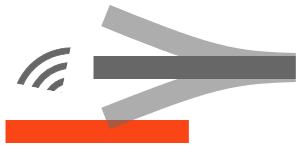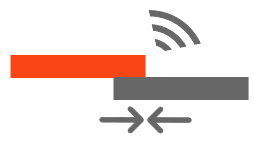Squeak and Rattle Director
Use the Squeak and Rattle Director tool to create evaluation lines, evaluate them and optimize the interfaces to eliminate squeak and rattle issues.
The Squeak and Rattle Director (SnRD) allows Part-time analysts as well as advanced S&R CAE engineers to rapidly identify and eliminate Squeak and Rattle Risks in products at an early design stage. This is achieved by utilizing a novel set of tools and methods included in a stream-lined, semi-automated process which is fully integrated in HyperWorks X.
SnRD simplifies otherwise complex and time-consuming tasks, making it easy for you to analyze risks, identify root-causes, find a solution through numerical optimization and explore effects caused by climate and manufacturing variabilities. Together with the extensive S&R expertise offered by Altair Product Design Team, Altair Squeak and Rattle Director is the market leading solution for Perceived Quality.
RATTLE

Figure 1.
SQUEAK

Figure 2.
The phenomena of squeak and rattle may occur even in a newly manufactured product, and will increase in time, causing deterioration of product quality and discomfort.
Both testing and simulation techniques could be used in various industries, aimed to eliminate the occurrence of squeak and rattle. Consider the example of automotive industry, where the problem of squeak and rattle is solved to reduce the noise, vibrations, harshness and control the cabin noise. This enhances the ride quality and comfort.
To develop innovative, reliable and efficient products, you need to be aware of how their design will perform under real world conditions, and have the ability to obtain these insights as quickly as possible. Manufacturers no longer have the luxury of performing lengthy physical tests to understand how a design will behave.